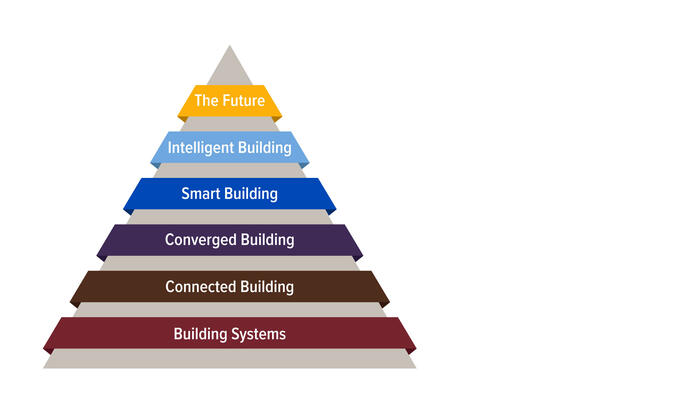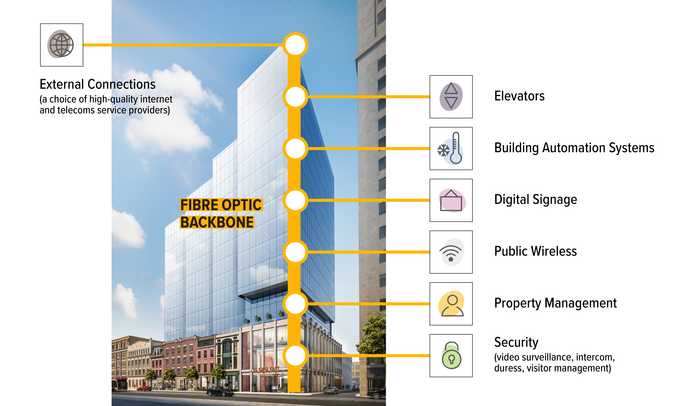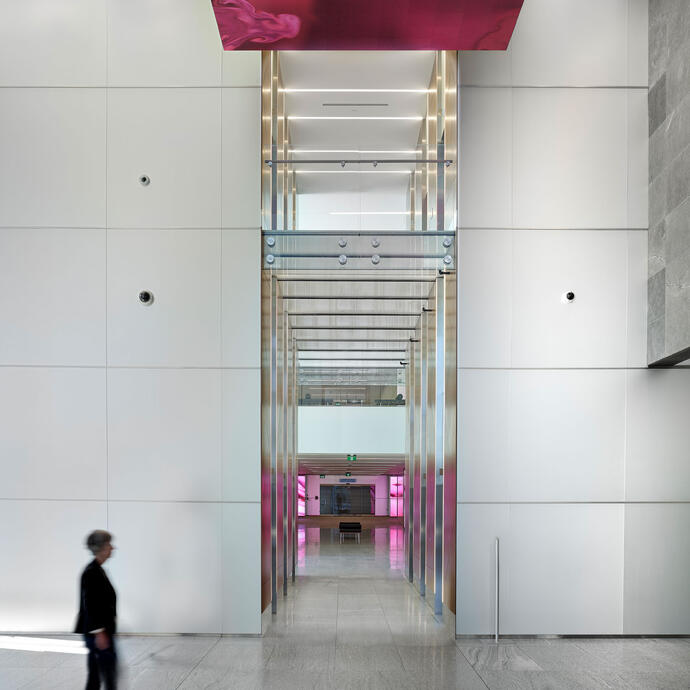Building owners want to make the most of their investment, no matter where they’re at in their technology journey. But it can be hard to understand all of the connectivity options out there, and what differentiates smart and intelligent buildings.
That’s where Smith + Andersen’s Intelligent Integrated Systems (IIS) team comes in. We work closely with clients to identify the approach that will work best for their building.
Principal Langdon Baker, Senior Associate Obhishek Bhattacharjee, and Project Manager Dave Hiemstra recently discussed the difference between “cool” and useful, and how they help clients achieve each building’s full potential.
How does the IIS team find the right approach?
LANGDON:
For most people, a smart building has features, or automates actions, that make their life easier. This has a different meaning for every client, of course. It could be as simple as being able to adjust their thermostat from their couch, or as complex as a full building automation system that controls all of the HVAC.
DAVE:
More and more, developers are hearing the word “smart” coming from their tenants, or prospective tenants, but this is a very broad term! We work with developers to define the difference between smart and intelligent technology, and to dig deeper into what each approach means for their building. We're getting past the gimmicky “cool” factors to what's actually going to be useful and viable for clients.
OBHISHEK:
One example of “cool” we hear a lot is a system that scans the license plate when someone comes into the parking lot. This is then connected to a database that knows that the person in the car with that license plate has their office is on the 11th floor, so the elevator is ready and waiting when they enter the lobby. And by the time they enter their office, it’s at their desired temperature and lighting levels.
LANGDON:
See, and that’s where the problem lies, because that “cool feature” doesn’t track with human nature! This use case is limited to occupants that park in the building and have a dedicated office. These individuals may park at the building during a weekend to go to a hockey game or something. Changes in behaviour aren’t accounted for, so the HVAC, elevators, and lighting are all moving and using energy for no reason. That’s where building intelligence comes in – looking at what is actually happening in the building, and reacting to that reality. Life isn’t confined to a set of pre-programmed set routines!
OBHISHEK:
Exactly. Clients are always interested to learn that a smart building may be capable of some independent action, but an intelligent building is designed to “think for itself” and use data from smart systems to optimize building performance.

So intelligent integration is mostly what you don’t see?
DAVE:
Well, let’s say there’s a lot more that goes on behind the scenes than people realize, and that's an important aspect of intelligence. The “cool factor” can be found in the very visible technology, sure, but what's more important is the way systems interact and how a building responds to the data gathered by those systems. It’s about making that building more efficient.
LANGDON:
Yes! A lot of the pieces that elevate a building from smart to intelligent is technology that helps the operations team to better react to situations in the building and streamline operations. Not necessarily “cool”, but the value is found in the fact that intelligent systems allow a building’s operations team to preemptively maintain assets and keep a building running smoothly. Potential issues are flagged and fixed before they impact end users.

For us, conversations lead to custom solutions.
OBHISHEK:
It’s so important to have these conversations with clients, because how building systems are designed, and how they are actually used, need to be aligned for the best outcome. Someone who may think they want a “smart” building could in fact want true intelligence – a building where the systems vary conditions or actions in response to different situations, requirements, and past experiences. Or they may want this type of connectivity in the future! As the IIS specialists, we can design infrastructure that meets current requirements as well as be adaptable to future needs.
Langdon Baker is based in our Toronto office and leads our national Intelligent Integrated Systems team. Click here for more information.
Obhishek Bhattacharjee is based in our Toronto office, and specializes in analytics, BAS, integrated building systems, and IoT. Click here for more information.
Dave Hiemstra is based in our Calgary office, and specializes in systems integration, lighting automation, lighting, and lighting controls. Click here for more information.
Click here to learn more about the Intelligent Integrated Systems team.

